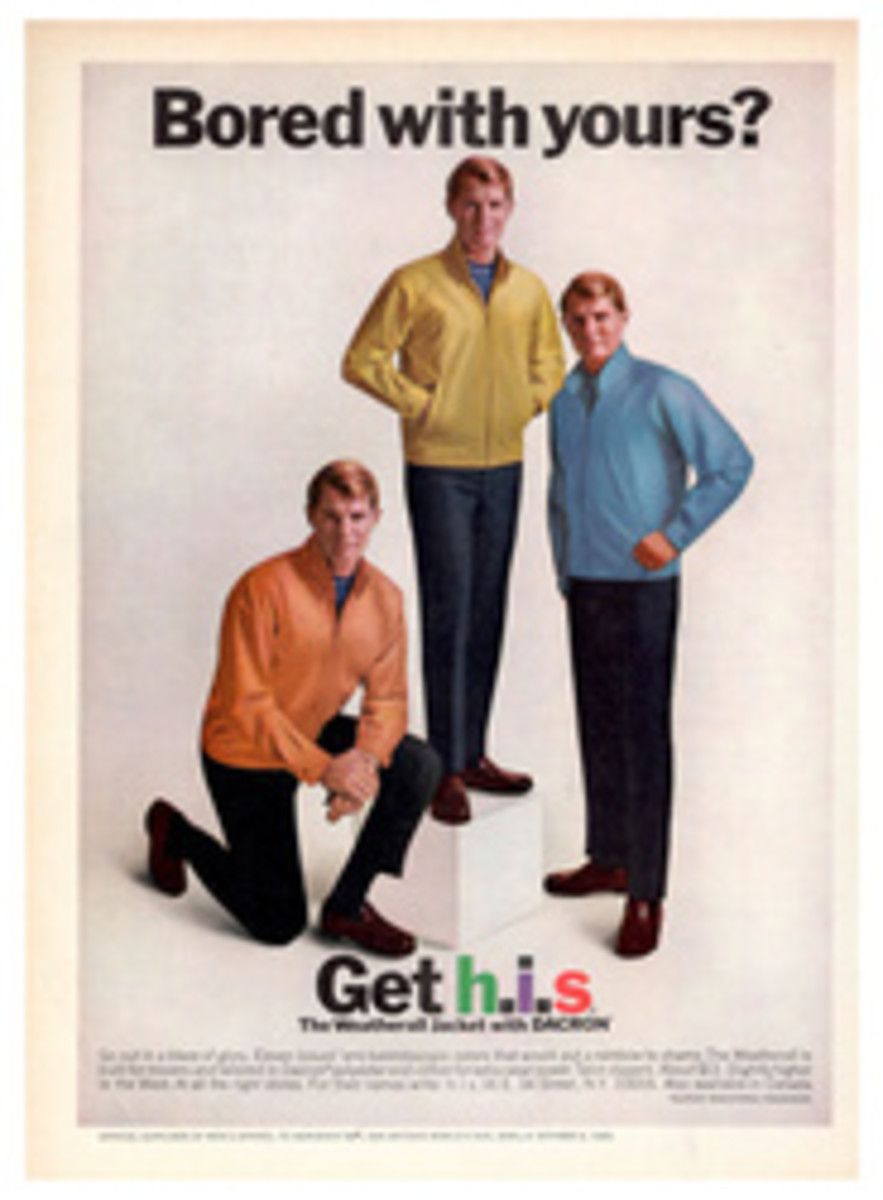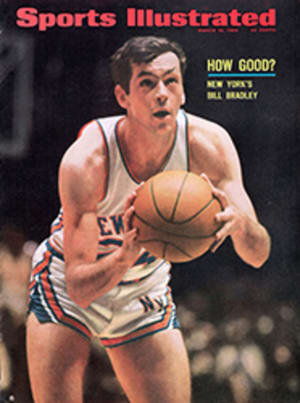
Another log on a smouldering fire
As the strolling players of professional golf assembled in Miami last week for the five-week march up Florida and the Carolinas to the Masters, everything was falling right into place. The usual morning glories of the opening weeks of the tour—interlopers like Bill Casper and Arnold Palmer, who stole a couple of victories before the rest of the chaps were even warmed up—had returned to obscurity. Now the big names of golf were asserting themselves, people like Tom Weiskopf, Charlie Coody, Fred Marti, Bert Greene and Jack Montgomery. In fact, Palmer and Casper didn't even show up for last week's Doral Open, no doubt saving themselves for the Cajun Classic and the Kemper Open when the new powerhouses of golf would be relaxing on their yachts.
With the 1968 tour in its eighth week, the leading money winner with $43,662.50 was George Knudson, who had waltzed off with consecutive victories in the tour's two preceding events at Tucson and Phoenix. George Knudson? Right, George Knudson. Anybody in Canada can tell you that George, the man who glides mysteriously around golf courses peering out at the world through a pair of secret-agent eyeshades, is Winnipeg's 145-pound contribution to physical fitness. Prior to this year he listed among his triumphs the 1961 Coral Gables Open, the 1962 Maracaibo Open and the 1964 Fresno Open, to say nothing of having finished 29th on last year's money list. When Knudson was asked upon his arrival in Miami if he ever intended to let someone else have a shot at the winner's check, he scratched his chin and grinned. His greed finally subsided at Doral, where he shot opening rounds of 76-71 to miss the cut, so he packed his clubs and headed up the Florida coast to wait for this week's Florida Citrus Open at Orlando.
That left the contest wide open, so Weiskopf, Coody, Marti and the rest fought it out with Gardner Dickinson, Bert Yancey, Dan Sikes and a few others who are left over from the past. By Sunday evening, there was Dickinson standing on the 18th green with the $20,000 winner's check in his hand, putting him up among such other leading money winners as Kermit Zarley, George Archer and Frank Boynton. Don't write off Jack Nicklaus, though. He felt he was hitting the ball well at Doral, and he finished in a tie for 16th place, winning $1,450 and leaving him only $181,098.08 short of his record winnings of last year. That is the way the tour has been going this year.
The fact that Dickinson was able to keep his mind on his golf at all last week was remarkable. This year it is Dickinson's turn to chair the four-man tournament committee, the players who are elected to wrestle with the week-to-week vicissitudes of the tour when they are not hitting delicate wedge shots to the green. So it fell to Gardner to direct and lead the players' latest battle with the parent PGA executive committee, an annual Jiggs-and-Maggie act in which they call each other names and accuse one another of all kinds of malicious skulduggery. At 5'10" and only 130, there is barely enough of the 40-year-old Dickinson to spread himself that thin.
The most recent spate broke out when the PGA submitted a new entry form scheduled to go into effect this week at Orlando. Practically before the ink was dry, both Palmer and Nicklaus—the meat and potatoes of professional golf, so to speak—let it be known that they had no intention of signing the form. Everyone else of consequence quickly followed suit.
In the past, the entry form for a PGA tournament has been a document about as controversial as a birth certificate. In signing it, the player agreed to pay an entrance fee of $1 for every $1,000 of prize money (up to a $50 maximum). He agreed to abide by all the rules and regulations governing PGA tournaments, not to split his prize money with other contestants and to play in the National Golf Day match if he won either the U.S. Open or the PGA Championship. He also signed over all personal rights to any movie, TV or still pictures of himself that might be used in the promotion of that tournament. Finally, he gave assurance that his mandatory liability insurance was fully paid up. Until now, that had been the extent of it, and nobody ever gave it so much as a second thought.
A week before Doral, the PGA let it be known that the new entry form would be somewhat more inclusive. It specifies that all concessions made by the player apply not just to the tournament in question but to "other tournaments" as well. It requires the player to participate not just in the National Golf Day match but also in the "Annual Championship of the PGA," if qualified. He assigns his personal rights to TV, movie and still pictures not only for the current tournament but "any tournament." In a final, brand-new clause, the player agrees "not to compete in any tournament, exhibition or golf event which is in conflict with any PGA cosponsored or approved tournament without the consent of the PGA." This means, in effect, that U.S. pros could not play in the British Open without PGA permission, since the Greater Milwaukee Open is scheduled at the same time.
All this might have gone unnoted and unchallenged were it not for the thorny attitude that the players and the PGA have assumed toward each other for the last three or four years. In an open letter to the players, PGA President Max Elbin, the very likable head pro at Washington's politically fashionable Burning Tree, made a bravo try at pouring some oil on the newly troubled waters. The new form, he explained, was designed simply to give the PGA legal power to sell the TV rights to future tournaments (a power it technically did not possess in the past), to guarantee the PGA against a boycott of its championship, such as the players threatened in each of the past two years, and to make their tournament sponsors feel a bit more secure.
The players didn't quite see it that way. In their eyes, they were giving the PGA power to virtually dictate the limits of their activities, including such extracurricular matters as those weekly TV shows which often run on winter weekends when PGA tournaments are in progress. As one of them put it, "The PGA wants to become our agent."
All through Doral week, everyone was trying to cling to his cool, at least in public. "I'm sure," said Jack Nicklaus, now serving in his first term as a member of the tournament committee, "that this is just a matter of working things out, and once we sit down with our lawyers we can hit on a solution." The Monday following Doral would test Jack's theory, for it was then that the tournament committee, which includes Doug Ford and Frank Beard, as well as Dickinson and Nicklaus, would first meet with the PGA executive committee at PGA headquarters in Palm Beach and try to sweep their present problems under the rug.
Fortunately for all concerned, both sides are at long last represented by the kind of able legal assistance that could steer them safely through a storm that might otherwise blow the whole organization apart. The players have retained Samuel Gates, a senior partner in the respected New York law firm of Debevoise, Plimpton, Lyons & Gates. The PGA has retained William Rogers of the equally distinguished Washington firm of Arnold & Porter, where Supreme Court Justice Abe Fortas was recently a partner.
Inasmuch as the spirit of revolt which ran so strongly among the players last year has considerably subsided, sweet reasonableness will most likely prevail at Palm Beach. Even so, the main bone of contention that sticks in the craw of most players will still be there. His name is Robert Creasey, and he is the PGA executive director who was hired three years ago to bring a firm hand, along with some order and efficiency, into an organization whose deliberations often bore a close resemblance to a late-evening symposium at the local bar and grill. Creasey's hand was firm enough, but it was also callous. Warmth and tact are not among his attributes, and he had hardly settled into the chair in his new office before the players were after his scalp. More than a few pros will tell you privately that Creasey's scalp will eventually be the price of peace with the PGA. After all, in a showdown between Jack Nicklaus and Bob Creasey, who would you pick?
PHOTO
CHAIRMAN DICKINSON HAD A BUSY WEEK
PHOTO
PROS HINT PGA'S BOB CREASEY MUST GO

